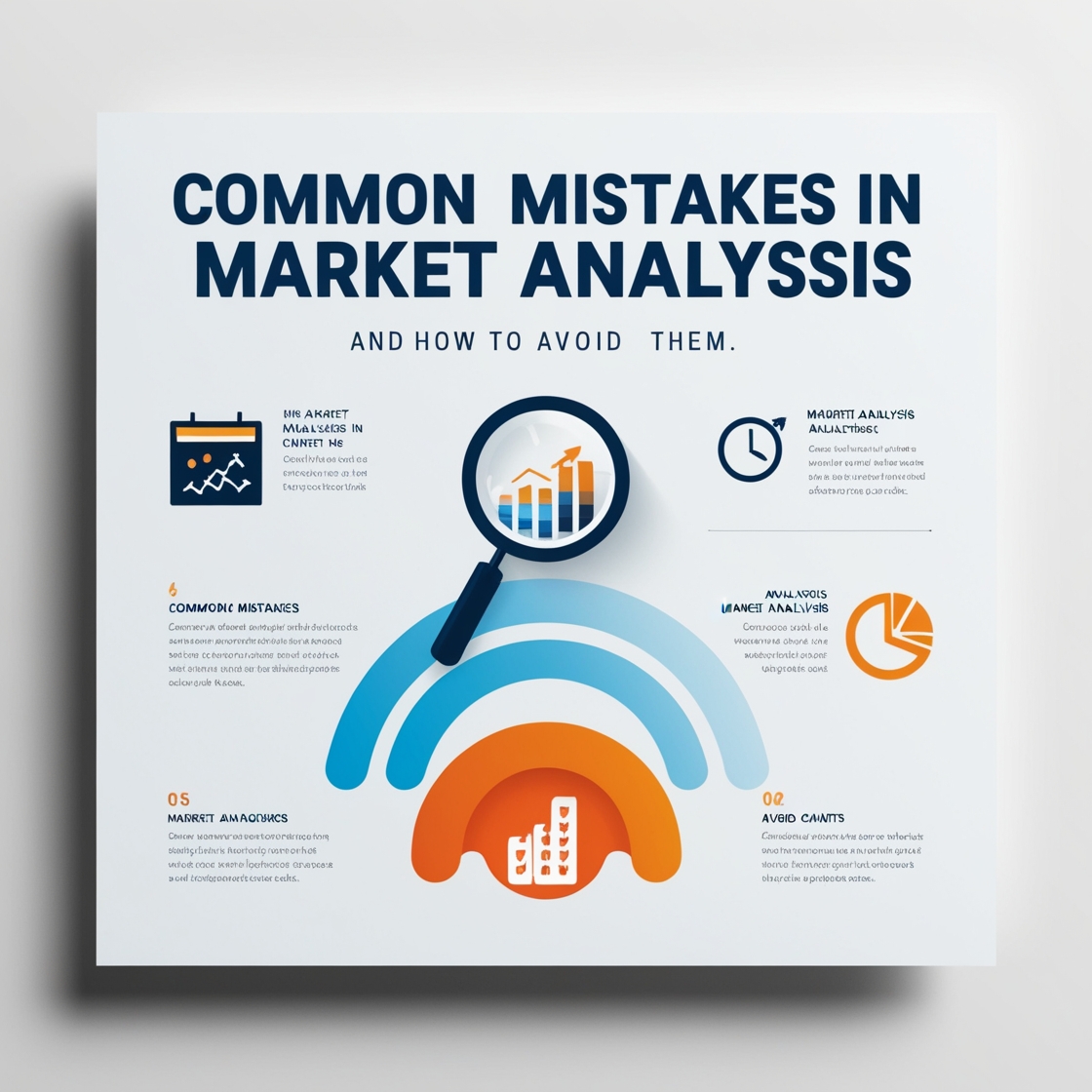Introduction
Market analysis is the backbone of any successful business strategy. It helps you understand your industry, identify opportunities, and avoid potential risks. But it’s easy to make mistakes that can derail your efforts. In this guide, we’ll explore the most common errors in market analysis and provide actionable solutions to steer clear of them.
Understanding Market Analysis
Definition and Purpose of Market Analysis
Market analysis involves examining market conditions, customer needs, and competition to inform business decisions. Its primary purpose is to provide a clear understanding of where your business stands and where it can go.
Key Components of Effective Market Analysis
- Customer Insights: Understanding your target audience’s behaviors and preferences.
- Industry Trends: Keeping tabs on current and emerging trends.
- Competitive Landscape: Analyzing your competitors’ strategies and market positioning.
Common Mistakes in Market Analysis
Relying on Incomplete Data
One of the biggest pitfalls is basing decisions on outdated or limited information. Using only one or two data sources can lead to skewed insights, ultimately affecting your strategy.
Overgeneralizing Market Insights
Assuming that your entire target market has the same needs or behaviors can lead to ineffective strategies. It’s vital to recognize the nuances within your audience.
Failing to Identify Target Audience
Neglecting to segment your audience or focus on niche markets can result in missed opportunities. A generic approach rarely works in today’s diverse consumer landscape.
Ignoring Competitor Analysis
Failing to study your competition can leave you blindsided. Understanding what your competitors are doing right—or wrong—is crucial for staying ahead.
Overlooking Emerging Trends
Focusing solely on current market conditions without considering future trends can make your strategy short-lived. Markets evolve rapidly, and businesses need to adapt.
Misinterpreting Consumer Behavior
Drawing conclusions based on assumptions or limited data about consumer behavior can lead to poor decisions. Understanding why customers act the way they do is critical.
Lack of Actionable Insights
Many analyses result in data overload without actionable strategies. If your insights don’t translate into clear business actions, they’re of little use.
Mismanaging Resources
Allocating either too few or too many resources to market analysis can harm its effectiveness. Overcomplicating the process can also result in analysis paralysis.
How to Avoid These Mistakes
Ensuring Data Accuracy and Relevance
Always source your data from reliable and updated sources. Diversify your data collection methods to include both quantitative (e.g., surveys) and qualitative (e.g., interviews) insights.
Segmenting Your Audience
Create detailed buyer personas to better understand your customers. Tailor your strategies to meet the unique needs of each segment, rather than treating your audience as a monolith.
Staying Updated with Market Trends
Set up alerts for industry news, subscribe to relevant newsletters, and use tools like Google Trends to stay informed about emerging shifts in your market.
Conducting Thorough Competitor Analysis
Develop a competitor matrix to map out their strengths, weaknesses, opportunities, and threats. An objective analysis of their strategies can offer valuable lessons.
Turning Insights into Action
Translate data into actionable plans. For example, if your analysis shows a growing demand for sustainable products, develop or market eco-friendly solutions.
Tools and Techniques to Enhance Market Analysis
- SEMrush and Google Analytics: Ideal for understanding website traffic and customer behavior.
- Tableau and Power BI: For advanced data visualization.
- SWOT Analysis: Helps identify your business’s strengths, weaknesses, opportunities, and threats.
- Customer Surveys: Direct feedback from your audience is invaluable for spotting trends and preferences.
Conclusion
Market analysis is an essential tool for making informed business decisions, but it’s not without its challenges. By avoiding common mistakes like relying on incomplete data or ignoring trends, you can create strategies that drive growth and innovation. The key is to approach market analysis with precision, adaptability, and a commitment to turning insights into action.
FAQs
- What is the biggest challenge in market analysis?
The biggest challenge is ensuring the data used is accurate and relevant to your specific market. - How do you ensure the data used in market analysis is accurate?
Use multiple reputable sources, cross-check data, and update it regularly. - What tools can small businesses use for market analysis?
Affordable tools like Google Analytics, HubSpot, and SEMrush are excellent starting points. - How often should a market analysis be conducted?
Ideally, it should be done quarterly or whenever significant market changes occur. - Can market analysis predict future trends?
While not foolproof, predictive analytics tools can help identify patterns and forecast future market movements.
